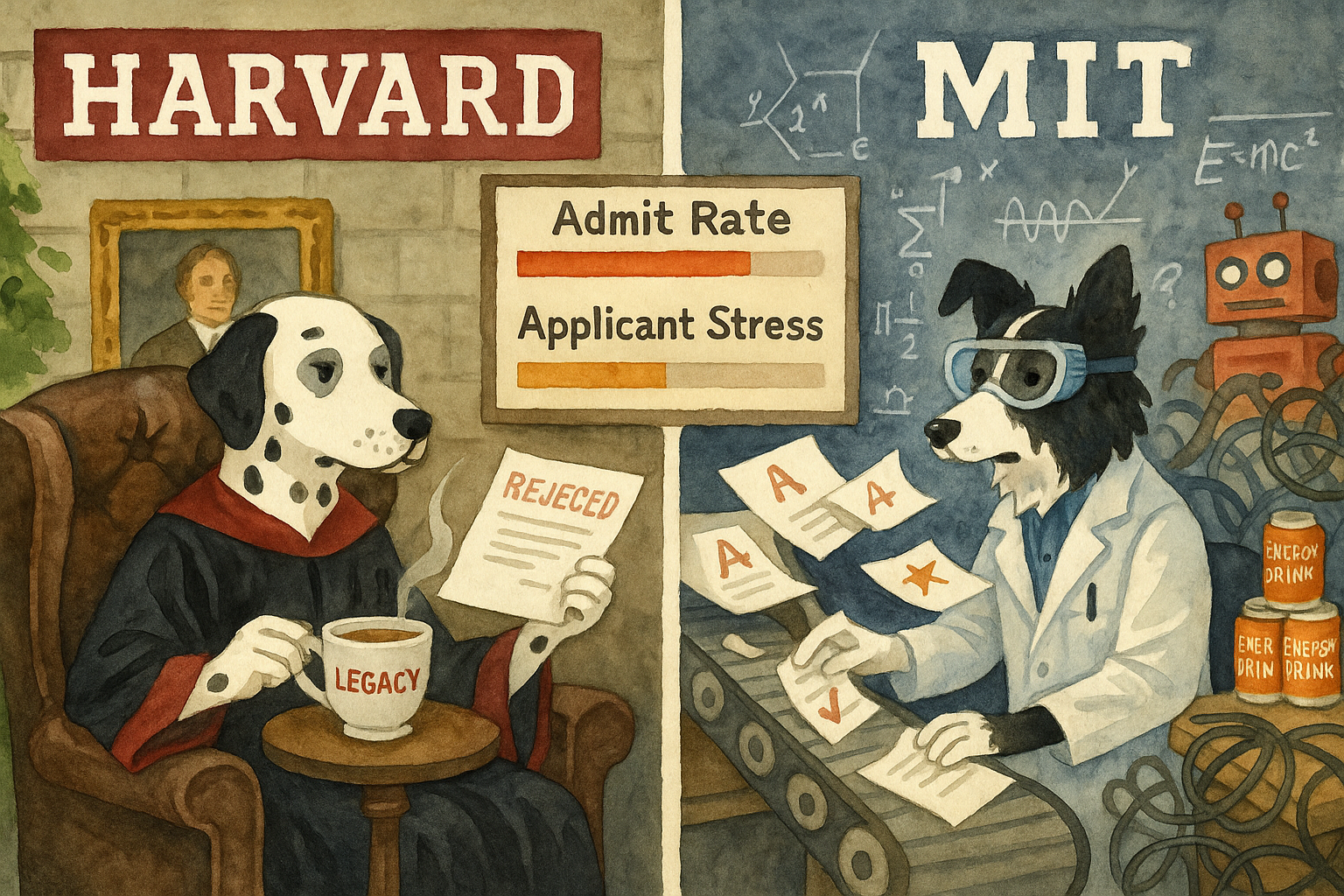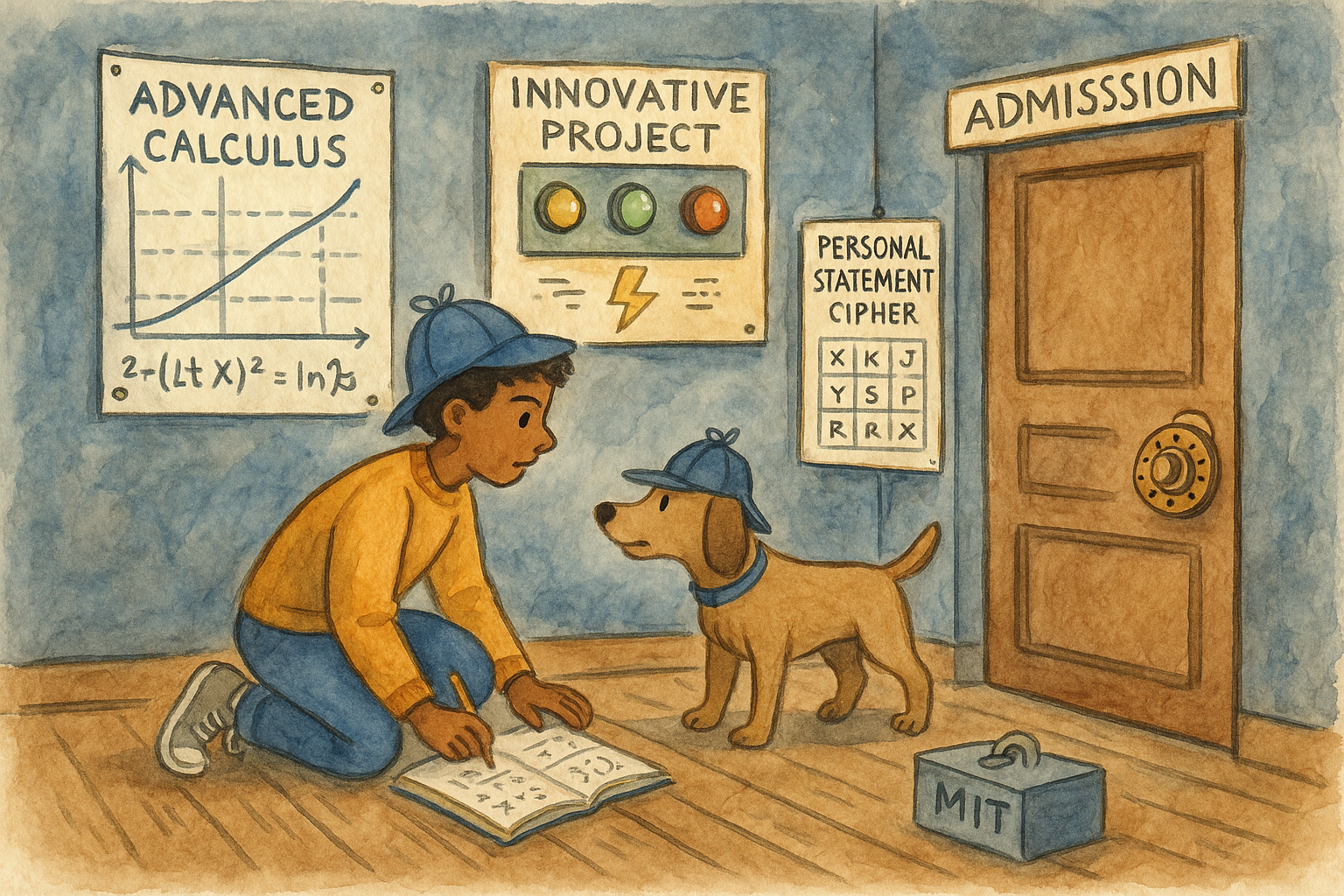
Why MIT Is Harder to Get Into Than Harvard (and Yes, We Mean It)
You’ve probably heard it a million times: Harvard is the ultimate pinnacle of college admissions. And sure, with its prestige, multi-century history, and that crimson logo practically tattooed on the concept of "success," it’s iconic for a reason. But here’s the spicy take: MIT? It’s harder. By a lot.
Let’s break it down.
1. MIT’s Application Pool is Self-Selecting
Unlike Harvard, MIT isn’t on the Common App. That’s right, no casually checking a box to throw your hat in the ring. If you’re applying to MIT, you’re filling out their own unique application, which means only the most committed and qualified students even bother to apply. That’s a huge filter. Compare that to Harvard, which gets its fair share of “shot-in-the-dark” applications. At MIT, if you’re not building rockets, writing neural networks, or rewriting the rules of thermodynamics for fun, you’re probably not applying.
2. The “Genius Factor” is Non-Negotiable
Harvard looks for well-rounded individuals: athletes, artists, activists, and future world leaders. MIT? They want specialists. Not just talented, but scarily talented. We’re talking about the kid who taught themselves quantum mechanics at 15 because “physics class was too slow.” Or the teen who invented a low-cost water purification system and patented it before prom. At MIT, raw intellectual horsepower isn’t just a bonus—it’s the baseline.
3. Acceptance Rates Can Be Deceptive
Yes, Harvard’s acceptance rate hovers around 4%, and MIT’s is slightly higher at about 4.7%. But let’s dig deeper. Remember that self-selecting applicant pool? MIT’s higher acceptance rate doesn’t mean it’s easier; it means fewer people bother to apply unless they truly believe they’re a fit. Meanwhile, Harvard’s application pool includes a broader range of hopefuls, including students who might not fully grasp just how competitive it is.
Translation: Getting into MIT means beating out the best of the best in their respective fields. That’s no small feat.
4. MIT’s Admissions Essays Are Brutal
Harvard’s essays give you space to be reflective, share your story, and dazzle them with your personality. MIT’s prompts? They’re short, sweet, and demand precision. You’ve got 250 words to describe your world, a challenge, a contribution, and how you spend your free time. There’s no room for fluff: just pure, unfiltered you. The pressure to nail it? Intense.
5. Collaboration Over Competition
Harvard may be known for its cutthroat vibes, but MIT thrives on collaboration. That might sound warm and fuzzy, but it means you’ll be evaluated on your ability to work with others who are just as brilliant as you are. How do you demonstrate that in an application? You’ve got to show that your genius doesn’t live in a vacuum. It’s fueled by teamwork, mentorship, and shared curiosity. That’s a rare quality to convey, and it’s one of the hardest parts of standing out to MIT.
6. MIT’s Unique Culture
MIT’s culture is unlike any other—it’s nerdy, mischievous, and relentlessly curious. From legendary hacks (like putting a police car on top of the Great Dome) to their obsession with problem-solving for fun, MIT students are wired differently. To get in, you need to prove that you’re not just a genius; you’re a creative genius. They want to see how you think, how you experiment, and how you find joy in solving impossible problems.
7. Harvard Loves Potential, MIT Loves Proof
Here’s the kicker: Harvard loves admitting students who show potential. You were valedictorian? Amazing. You have an ambitious idea for a nonprofit? Incredible. MIT? They want proof that you’ve already started making waves. Whether it’s publishing a research paper, winning international coding competitions, or building a satellite, you’ve got to show that you’re not waiting for college to start changing the world. At MIT, results matter.
Final Thoughts: MIT vs. Harvard
At the end of the day, both schools represent the pinnacle of academic achievement. But they’re looking for fundamentally different types of students. Harvard loves the polished, well-rounded go-getter who can thrive anywhere. MIT? They’re on the hunt for the next Einstein, Curie, or Turing: someone whose brilliance is already reshaping the future.
So if you’re applying to MIT, don’t just tell them why you’re great. Show them the proof. And if you need a little help turning your genius into a killer application, you know where to find us! Top Dog has your back.


Post a comment